
in Thoreau’s Journal:
Saw but one Lysimachia stricta left in the meadows—the mead, sweet meadows.


in Thoreau’s Journal:
Saw but one Lysimachia stricta left in the meadows—the mead, sweet meadows.
in Thoreau’s Journal:
The fore part of this month was the warmest weather we have had; the last part sloping toward autumn has reflected some of its coolness, for we are very forward to anticipate the fall. Perhaps I may say the spring culminated with the commencement of haying––& the summer side of the year in mid July.
How long is it since I heard a veery? Do they go or become silent when the goldfinch heralds the autumn? Do not all flowers that blossom after mid-July remind us of the fall? After midsummer we have a belated feeling as if we had all been idlers––& are forward to see in each sight––& hear in each sound some presage of fall.–– just as in mid-age man anticipates the end of life. Tansy is a prevalent flower now––dog’s bane still common–– Night hawks squeak & fly low over Thrush alley at 4 Pm.

A small purple orchis Plantanthera psycodes––quite small––so that I perceive what I called by this name before must have been the fimbriata.
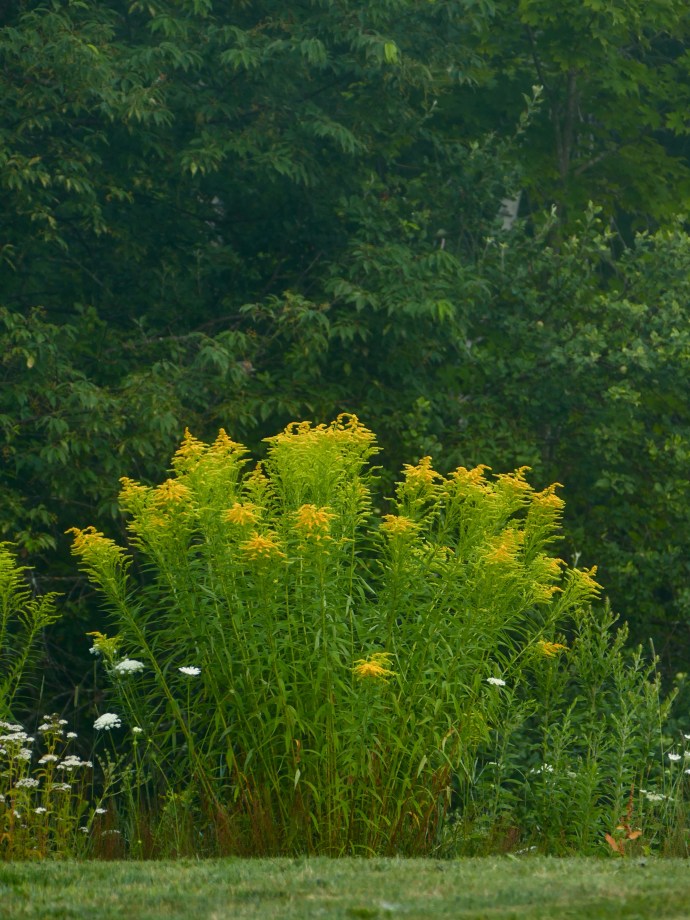
in Thoreau’s Journal:
….I hear a dry ripe autumnal chirp of a cricket–– It is the next step to the first golden rod–– It grows where it escapes the mower––but no doubt in our localities of plants we do not know where they would prefer to grow if unmolested by man––but rather where they best escape his vandalism–– How large a proportion of flowers for instance are reperessed to & found by hedges walls & fences.

in Thoreau’s Journal:
Methinks the season culminated about the middle of this month––That the year was of indefinite promise before–– ––but that after the 1st intense heats we postponed the fulfillment of many of our hopes for this year––& having as it were attained the ridge of the summer––commenced to descend the long slope toward winter––the afternoon & down hill of the year–– Last evening it was much cooler––& I heard a decided fall sound of crickets––

in Thoreau’s Journal:
It is pleasing to behold at this season contrasted shade and sunshine on the side of neighboring hills. They are not so attractive to the eye when all in the shadow of a cloud or wholly open to the sunshine. Each must enhance the other….

Above all there is the Cardinal flower just opened––close to the water’s edge––remarkable for its intense scarlet color––contrasting with the surrounding green….It has been a clear cool breezy day for the season.
in Thoreau’s Journal:

….also the Goldfinch twitters over oftener…. I mark again the sound of crickets or locusts about alders &c about this time when the first asters open––which makes you fruitfully meditative–– Helps condense your thoughts––like the meldews in the afternoon–– This the afternoon of the year. How apt we are to be reminded of lateness—even before the year is half spent. Such little objects check the diffuse tide of our thoughts & bring it to a head––which thrills us–– They are such fruits as music, poetry, love which humanity bears.
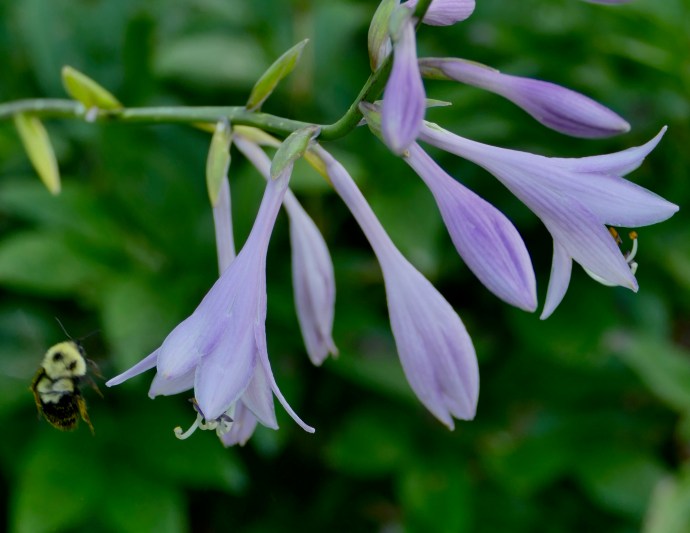
in Thoreau’s Journal:
It is a rare music the earliest bee’s hum amid the flowers––revisiting the flower bells just after sunrise.
in Thoreau’s Journal:
For a week or more I have perceived that the evenings were considerably longer and of some account to sit down & write in. Ate an Early-Harvest apple of my own raising yesterday––not quite ripe. The scent of some very early ones which I have passed in my walks, imparting some ripeness to the year, has excited me some what. It affects me like a performance a poem a thing done––and all the year is not a mere promise of Nature’s.

How far behind the spring seems now––farther off perhaps than ever––for this heat & dryness is most opposed to spring. Where I sought for flowers in April & May I do not think to go now––it is either drought & barrenness or fall there now. The reign of moisture is long since over –– For a long time the year feels the influence of the snows of winter & the long rains of spring–– But now how changed! It is like another & a fabulous age to look back on. When earth’s veins were full of moisture & violets burst out on every hill-side. Spring is the reign of water–– Summer of heat & dryness. Winter of cold. Whole families of plants that lately flourished have disappeared. Now the phenomena are tropical. Let our summer last long enough & our land would wear the aspect of the tropics.–– The luxuriant foliage & growth of all kinds shades the earth & is converting every copse into a jungle. Vegetation is rampant –– There is not such rapid growth it is true, but it slumbers like a serpent that has swallowed its prey. Summer is one long drought. Rain is the exception –– All the signs of it fail for it is dry weather–– Though it may seem so the current year is not peculiar in this respect. It is a slight labor to keep account of all the showers the rainy days of of a summer–– You may keep it on your thumbnail.

in Thoreau’s Journal:
About the water further north the elodea is very common––& there too the rhexia is seen afar on the islets––its brilliant red like a rose— It is fitly called Meadow Beauty–– Is not the handsomest & most striking & brilliant flower since roses & lillies began? Blue vervain out some days.


in Thoreau’s Journal:
….and now reddish fruit of the trillium….
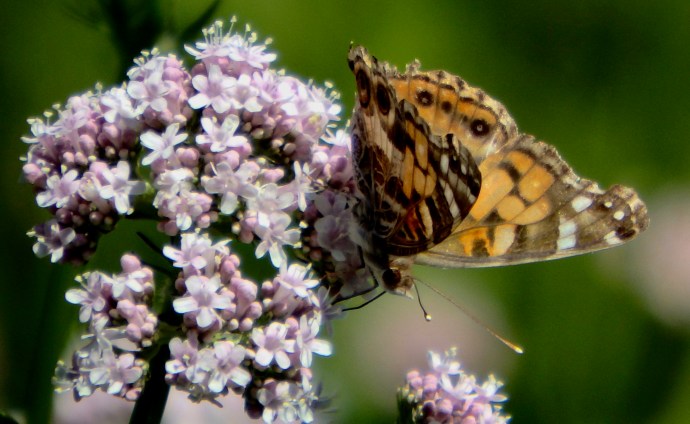
in Thoreau’s Journal:
The forenoon is fuller of light. The butterflies on the flowers look like other & frequently larger flowers themselves.
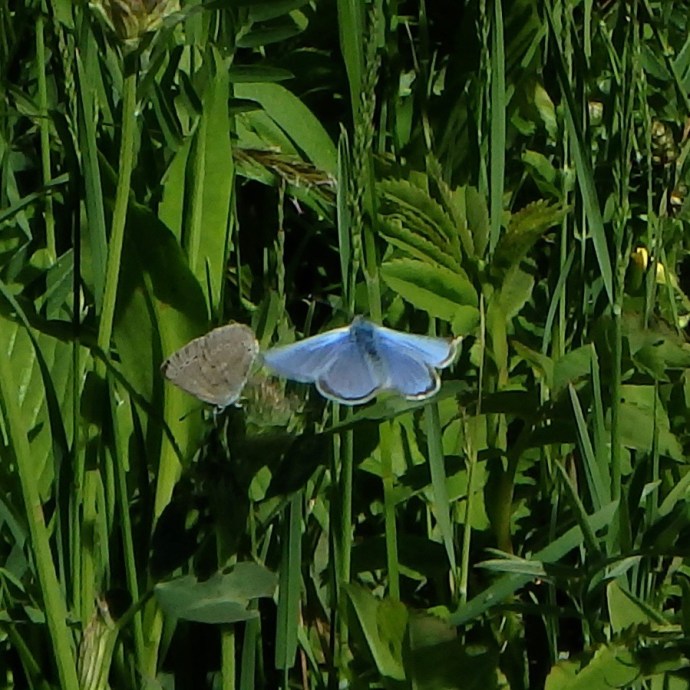
Now I yearn for one of those old meandering dry uninhabited roads which lead away from towns––which lead us away from temptation, which conduct to the outside of earth––over its uppermost crust––where you may forget in what country you are traveling––where no farmer can complain that you are treading down his grass––no gentlemen who has recently constructed a seat in the country that you are trespassing––on which you can go off at half cock––and waive adieu to the village––along which you may travel like a pilgrim––going nowither.

Where travelers are not too often to be met. Where my spirit is free––where the walls & fences are not cared for––where your head is more in heaven than your feet are on the earth––which have long reaches––where you can see the approaching traveller half a mile off and be prepared for him––not so luxuriant a soil as to attract men––some root and stump fences which do not need attention–– Where travelers have no occasion to stop––but pass along and leave you to your thoughts–– Where it makes no odds which way you face whether you are going or coming––whether it is morning or evening––mid noon or mid-night––

Where earth is cheap enough by being public. Where you can walk and think with least obstruction––there being nothing to measure progress by. Where you can pace when your breast is full and cherish your moodiness. Where you are not in false relations with men––are not dining nor conversing with them….

It must simply be the way and the life.


in Thoreau’s Journal:
4 PM. Annursnack The under sides of the leaves exposed by the breeze give a light blueish tinge to the woods as I look down on them. Looking at the woods west of this hill there is a grateful dark shade under their eastern sides where they meet the meadows––their cool night side––a triangular segment of night to which the sun has set. The mts look like waves on a blue ocean tossed up by a stiff gale. The rhexia Virginia is in bloom.

in Thoreau’s Journal:
My greatest skill has been to want but little….
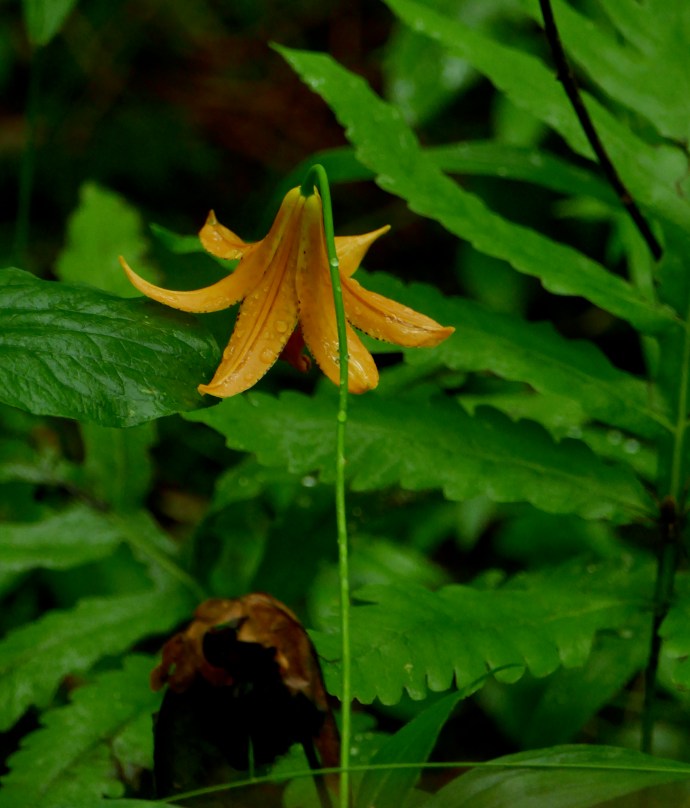
Heavily hangs the Common Yellow lily Lilium Canadense in the meadows–– In the thick alder copses by the causeway side I find the Lysimachia hybrida. Here is the Lactuca Sanguinea with its runcinate leaves-tall-stem & pale crimson ray.
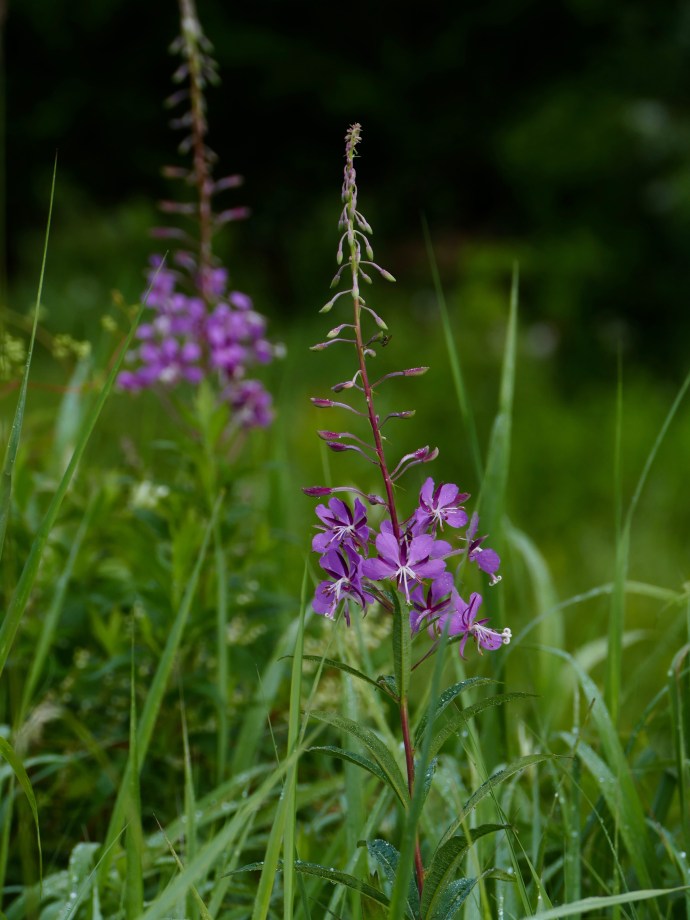
And that green stemmed one higher than my head resembled the last in its leaves––is perchance the tall lettuce or Fire weed.

Can that fine white flowered meadow plant with the leaf be a Thalictrum?
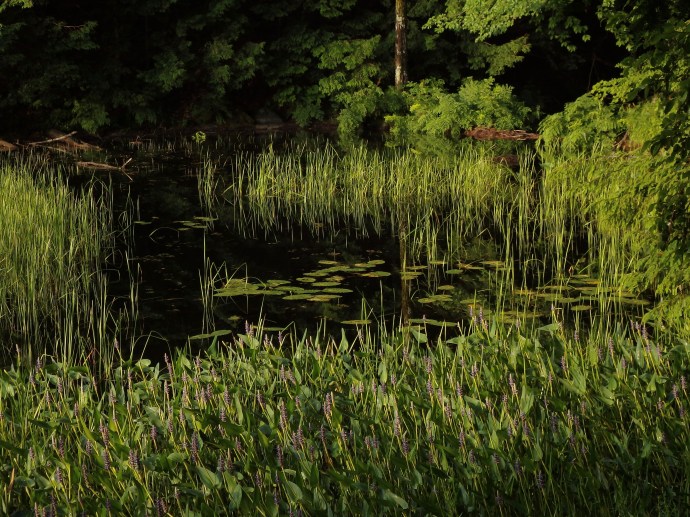
in Thoreau’s Journal:
We are gliding swiftly up the river by Lee’s bend. The surface of the water is the place to see the Pontederia from for now the spikes of flowers are all brought into a dense line––a heavy line of blue a foot or more in width––on both sides of the river. The pontederias are now in their prime––there being no withered heads, they are very freshly blue. In the sun when you are looking west they are of a violaceous blue….

In many parts of the river the pickerel weed is several rods wide––its blueness akin to the misty blue air which paints the sky….The border of pontederia is rarely of equal depth on both sides at once––but it keeps that side in the meander where the sediment is deposited––the shortest course which will follow the shore…..This is the longest line of blue that nature paints with flowers in our fields––though the lupines may have been more densely blue within a small compass–– Thus by a natural law a river instead of flowing straight through its meadows––meanders––from side to side––& fertilizes this side or that & adorns its banks with flowers.
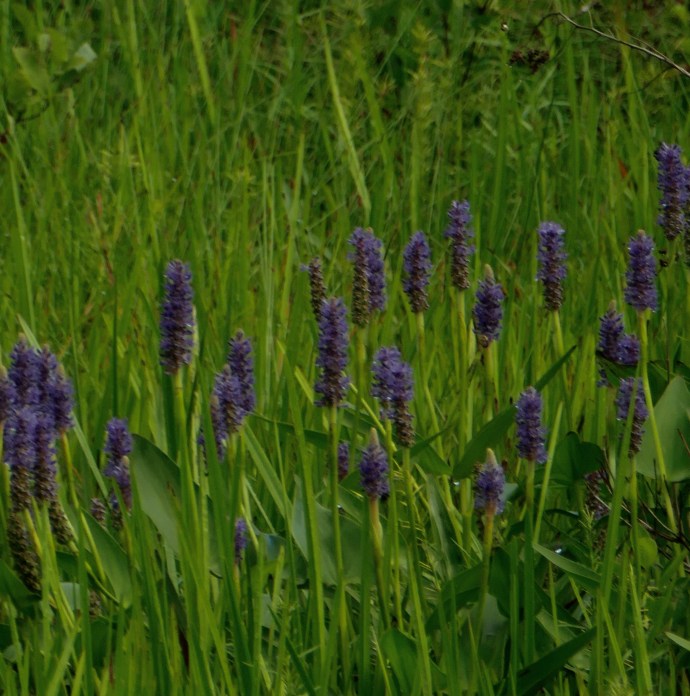

in Thoreau’s Journal:
The meadows on the Turnpike are white with the meadow rue now more than ever. They are filled with it many feet high.


in Thoreau’s Journal:
Many men walk by day; few walk by night. It is a very different season.
in Thoreau’s Journal:
We seem to be passing or to have passed a dividing line between spring & autumn––& begin to descend the long slope toward winter…

The stems of various asters & golden-rods which ere long will reign along the way begin to be conspicuous.

in Thoreau’s Journal:
I see a rose now in its prime by the river in the water amid the willows & button bushes––while others lower on shore are nearly out of bloom…
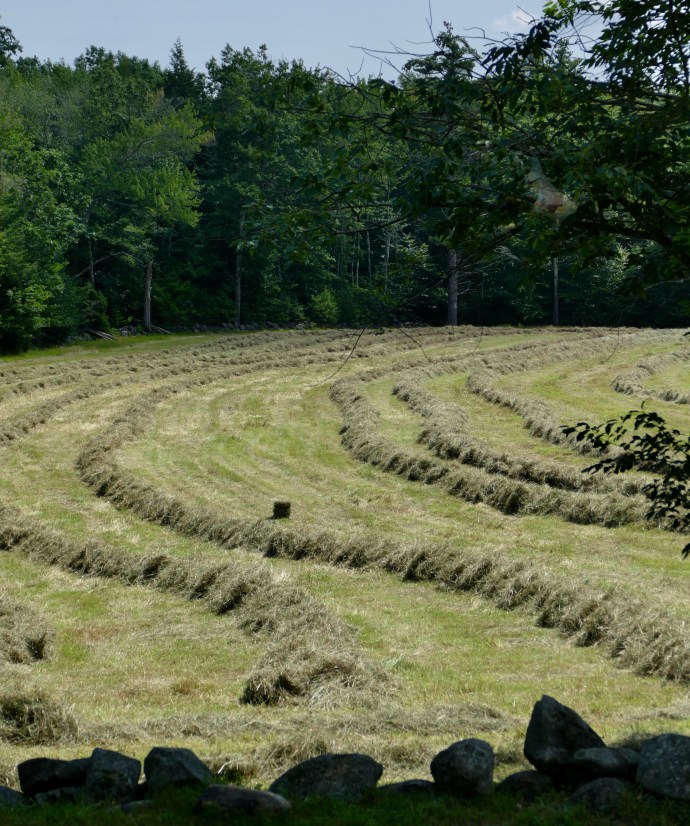
in Thoreau’s Journal:
This might be called the hayer’s or hay-maker’s moon, for I perceive that when the day has been oppressively warm the haymakers rest at noon & resume their mowing after sunset, sometimes quite into evening.
in Thoreau’s Journal:

The early cotton grass is now about gone from Hubbard’s Close.

With this month began the reign of river weeds obstructing the stream…

A lilium Canadense (at Dodge Brook corner by road) approaching Superbum 4 1/2 feet high with a whorl of 4 flowers & 2 more above somewhat pyramidal & petals recurved.

You must be logged in to post a comment.